Quick heads-up: some of the links on this page are affiliate links. If you make a purchase through them, we may earn a small commission (at no extra cost to you). This small bit of income helps keep our site running.
Best Snowshoes of 2025
This post was last updated on May 09, 2024.
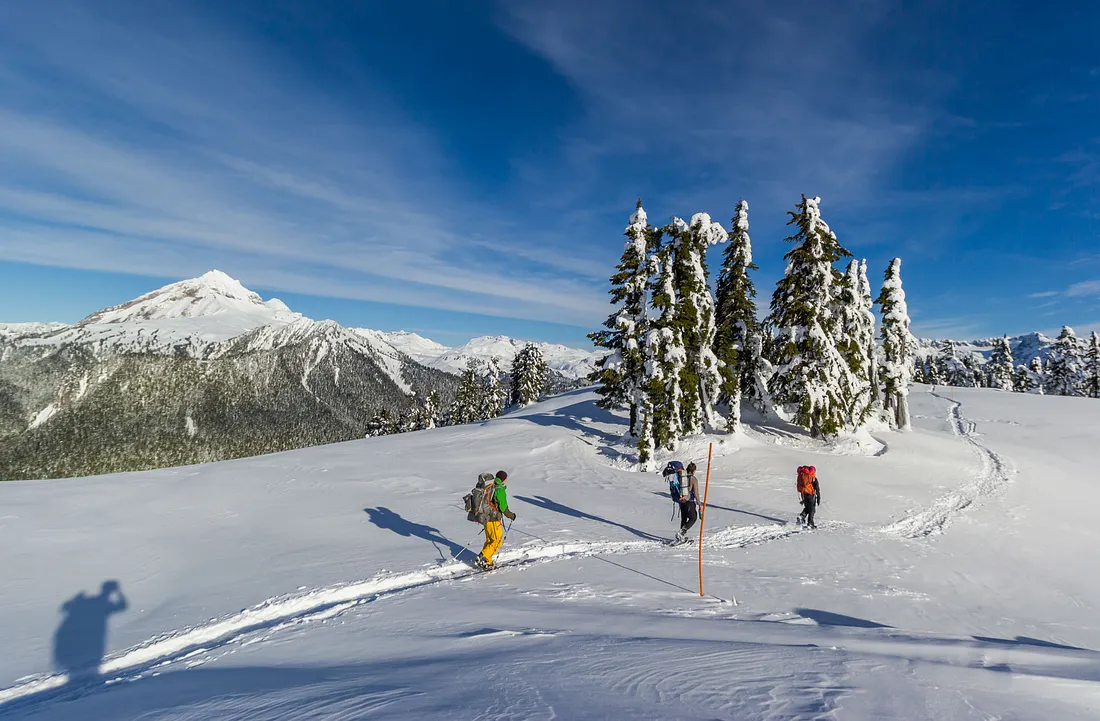
Snowshoes are a great tool for winter travel in the mountains. Especially when you can get off the trail and start clomping through some untouched powder, a good pair of snowshoes really shines, and open up a snowy world to explore.
To test out snowshoes, we've broken trail and gone off the trail. We've gone up more than a few peaks, trekked to backcountry huts and carried them on our backpack when they weren't needed. The snowshoes below are the ones that we keep around, and that we think you should consider buying.
Our Top Recommendations
Our Top Pick
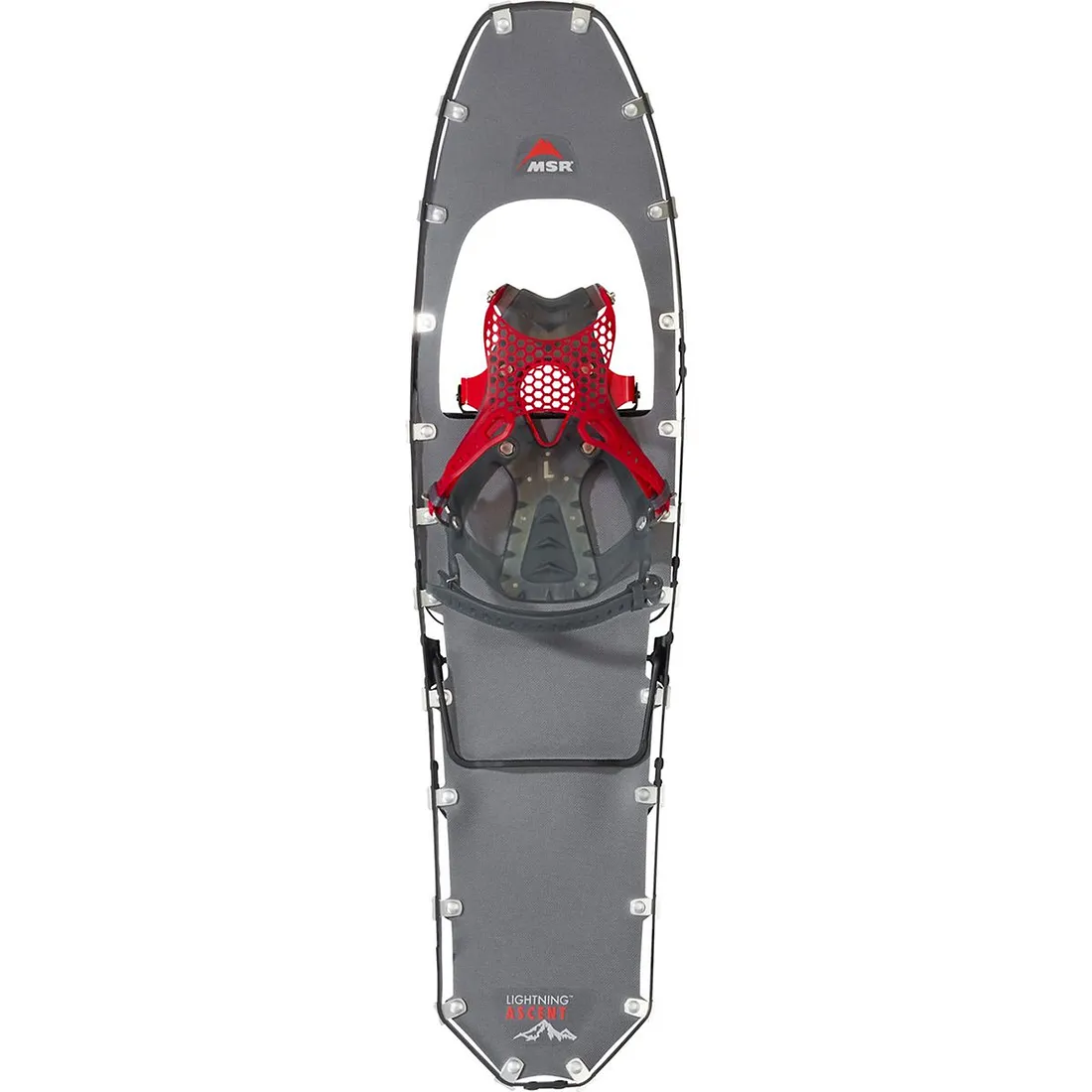
MSR Lightning Ascent
Binding Design
Ease of Use
Flotation
Traction
Weight
| Binding Design |
8
|
| Ease of Use |
8
|
| Flotation |
7
|
| Traction |
10
|
| Weight |
8
|
The MSR Lightning Ascent takes the best pick spot due to their excellent traction and solid binding system. They do however sacrifice some flotation in favor of better ergonomics.
Runner Up #1
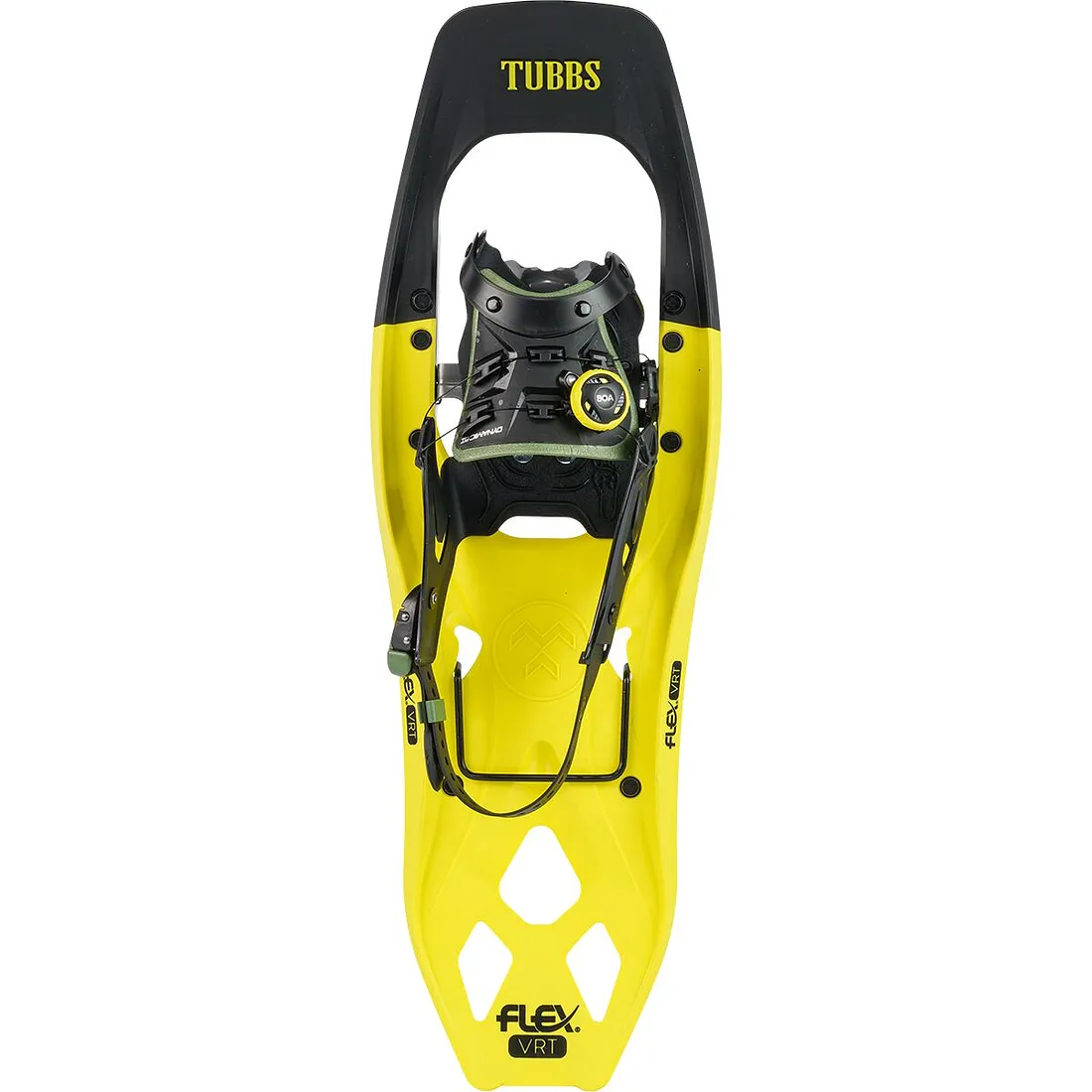
Tubbs Flex VRT
Binding Design
Ease of Use
Flotation
Traction
Weight
| Binding Design |
9
|
| Ease of Use |
8
|
| Flotation |
7
|
| Traction |
9
|
| Weight |
7
|
The Tubbs Flex VRT snowshoes secure the top pick runner-up spot due to what we think is the best binding system on the market, and solid traction that's good enough for almost all terrain.
Runner Up #2
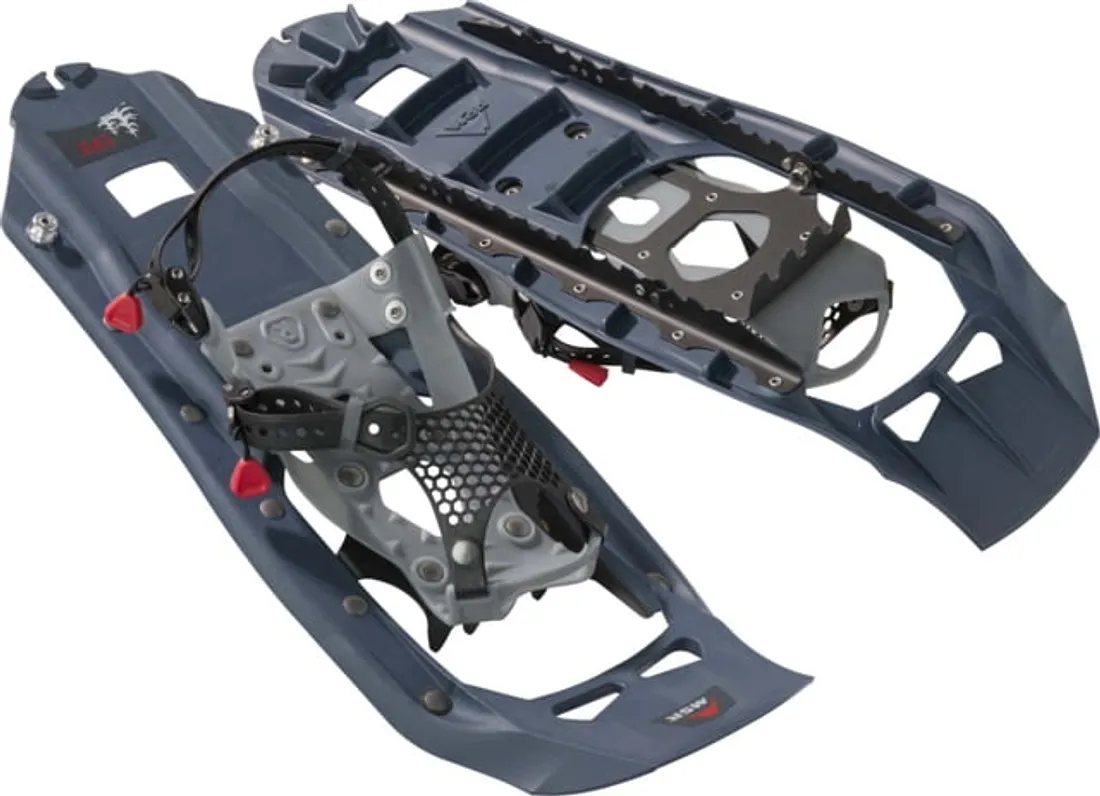
MSR Evo Trail 22
Binding Design
Ease of Use
Flotation
Traction
Weight
| Binding Design |
8
|
| Ease of Use |
6
|
| Flotation |
8
|
| Traction |
8
|
| Weight |
8
|
The MSR Evo Trail 22 is a top pick due to its great value and solid binding system. But with no heel lifter and only one size, it's not as versatile or easy to use as our other 2 top picks.
What you should look for
(and what we test for)
Size
Make sure the size of your snowshoes is right for your weight. Most snowshoes will have a recommended weight. Also pay attention to the flotation rating if you plan to venture off trail in to powder. Bigger snowshoes will generally be heavier, but also provide better flotation.
Weight
There isn't a huge range of weights in the snowshoe market, but still it's good to consider weight. Heavy snowshoes will tire you out quickly.
Bindings
Select a binding style that secures tightly to your boots, preferably an easy-to-adjust model that can accommodate a range of footwear.
Traction
Look for snowshoes with both vertical and horizontal metal cleats. This is especially important if you want to go off trail on to steep or uneven terrain.
MSR Lightning Ascent
$389.95The Best Snowshoes
Based on our research and testing, we think the MSR Lightning Ascent are the best Snowshoes on the market right now, for anyone looking to play hard outside.

| Binding Design |
8
|
| Ease of Use |
8
|
| Flotation |
7
|
| Traction |
10
|
| Weight |
8
|
Reasons to Buy
- Exceptional traction
- Perfect for all mountainous terrain
- Robust construction and material
- Combines lightness with high performance
Reasons to Avoid
- Quite expensive
- May be overkill for casual trekking
- Not the best flotation
The MSR Lightning Ascent is a favorite among winter adventurers. These snowshoes stand out for their all-terrain capabilities and top-notch traction. With a frame made of aircraft-grade aluminum, they can withstand harsh outdoor conditions while remaining relatively lightweight. They are perfect for those who love venturing off the beaten path, especially in areas with steep and icy terrains.
One of the unique features of the MSR Lightning Ascent is the Paragon binding. This innovative design works to secure the shoe to your foot comfortably, reducing chances of hot spots or blisters, a common complaint among snowshoers. The binding also simplifies in-and-out steps, making your trips less of a hassle.
In terms of traction, Lightning Ascent takes the lead. Its 360-degree Traction frames paired with Torsion2 crampons give you impressive grip on diverse snow conditions and tricky slopes, boosting your confidence as you hike.
Buyers have, however, pointed out a couple of drawbacks. Some users have reported the Lightning Ascent being slightly heavier compared to other models in the market. A few have mentioned needing some time to get accustomed to the binding system. Others also note the price point as a bit steep.
Overall, users praise the MSR Lightning Ascent for their unmatched grip and solid construction. Despite a higher price tag and a steeper learning curve with the bindings, most users agree that these snowshoes deliver where it counts the most. If you're looking for reliable, gear to bag high peaks, traverse icy trails, or simply enjoy snow-filled wilderness, the MSR Lightning Ascent is a top contender to consider.
Prices
Tubbs Flex VRT
$279.95Runner Up
Based on our research and testing, we think the Tubbs Flex VRT are a great choice if you're looking for snowshoes to go play hard outside with, if our top pick isn't quite what you're looking for.

| Binding Design |
9
|
| Ease of Use |
8
|
| Flotation |
7
|
| Traction |
9
|
| Weight |
7
|
Reasons to Buy
- Excellent traction and gripping ability
- The BOA bindings are excellent
- Plastic decks are very durable
- Suitable for groomed trails, steep mountain terrain and everything in between
Reasons to Avoid
- A bit bulky for packing
- Some people aren't a fan of BOA closure systems
The Tubbs Flex VRT is a snowshoe that's been recognized for its phenomenal blending of performance attributes, turning heads among snowshoeing enthusiasts. It mostly appeals to those who seek quality gear for their winter adventures.
The design of these snowshoes is strikingly modern and functional. This pair comes with a FLEX Tail that reduces stress on your joints during long trips, something that users have highlighted as a great feature in their reviews.
The Tubbs Flex VRT falls into a higher than typical price range for snowshoes. However, most users feel the cost difference is justifiable considering its durability and comfort. According to them, these snowshoes stand the test of time, ensuring you'll get plenty of use in returns for your investment.
In terms of traction, the snowshoes have a Viper 2.0 carbon steel toe crampon and Traction rails that ensure a steady grip on icy terrain. Many users have praised these snowshoes for their excellent traction, even on steeper trails. This gives confidence to adventurers who wish to traverse different types of terrain, from packed to deep snow.
For the bindings, these snowshoes feature a Boa Closure System, which several users have claimed to be easy to use and adjust, even with gloves on. The system secures the entire foot and eliminates pressure points and hot spots.
As for the weight, some users found these snowshoes a tad heavier than other counterparts. However, they mentioned that the weight didn't detract from the overall performance.
Size is another factor that you'll want to consider. Users suggest that the larger shoe size (24 or 28 inches) is suitable for heavier loads or deeper snow. On packed trails, the smaller size (24 inches) might be more efficient.
Lastly, some users identified that initial fitting and adjustments might require a bit of patience, but once set, the snowshoes remain reliably fitted for subsequent uses.
MSR Evo Trail 22
$169.95Runner Up
Based on our research and testing, we think the MSR Evo Trail 22 are a great choice if you're looking for snowshoes to go play hard outside with, if our top pick isn't quite what you're looking for.

| Binding Design |
8
|
| Ease of Use |
6
|
| Flotation |
8
|
| Traction |
8
|
| Weight |
8
|
Reasons to Buy
- Solid traction for most terrain
- Very durable deck and cleats
- Great flotation in deep snow
- Very good binding system
Reasons to Avoid
- Only comes in one size (tail extension attachment available)
- Shape can make your gait a little awkward
- No heel lifter makes them not suitable for steep terrain
The MSR Evo Trail 22 snowshoes are grabbing the attention of outdoor enthusiasts everywhere. Known for their top-notch design and durability, these snowshoes are a must-have for everyone venturing into snow-covered trails.
These snowshoes undoubtedly ace in the durability department. The sturdy plastic decking of the MSR Evo Trail 22 is resistant to wear and tear, holding up even in the toughest of conditions. Their metal crampon and plastic deck design testify strength and longevity, promising adventure seekers a companion for many snowy escapades.
In addition to being strong, they are also super lightweight. At approximately 3.9 lbs per pair, they don't weigh you down on long treks. They're compact enough too, fitting into most backpacks without any fuss.
Maneuverability is a breeze with this pair. The steel traction rails and brake bars molded into the snowshoe decks provide extra security and balance, making them ideal for encountering icy and slick surfaces. Whether you're traversing rolling terrain or tackling some steep sections on a winter hike, these shoes won't let you down.
What people love most about the MSR Evo Trail 22 is its versatility. Not only are they good for beginners, owing to their easy strap-on design and stable walk, seasoned snowshoers also appreciate them because of their capability to handle a variety of terrains and conditions.
Customers have noted some minor downsides too. Even with the extension tails, floatation in deep snow can sometimes be lacking. The straps, while easy to fasten, have sometimes been reported to loosen during a trek, necessitating frequent re-adjustments.
Well, every product has its pros and cons, and it's evident that the MSR Evo Trail 22 has won most hearts with its easy to use, durable, and lightweight design. Although not perfect in every scenario, it offers a fantastic value for the price, and most users heartily recommend it.
Atlas Stratus
Best Budget Snowshoes
Based on our research and testing, we think the Atlas Stratus are a great pick if you're looking for snowshoes that are more budget friendly, without sacrificing too much in quality.
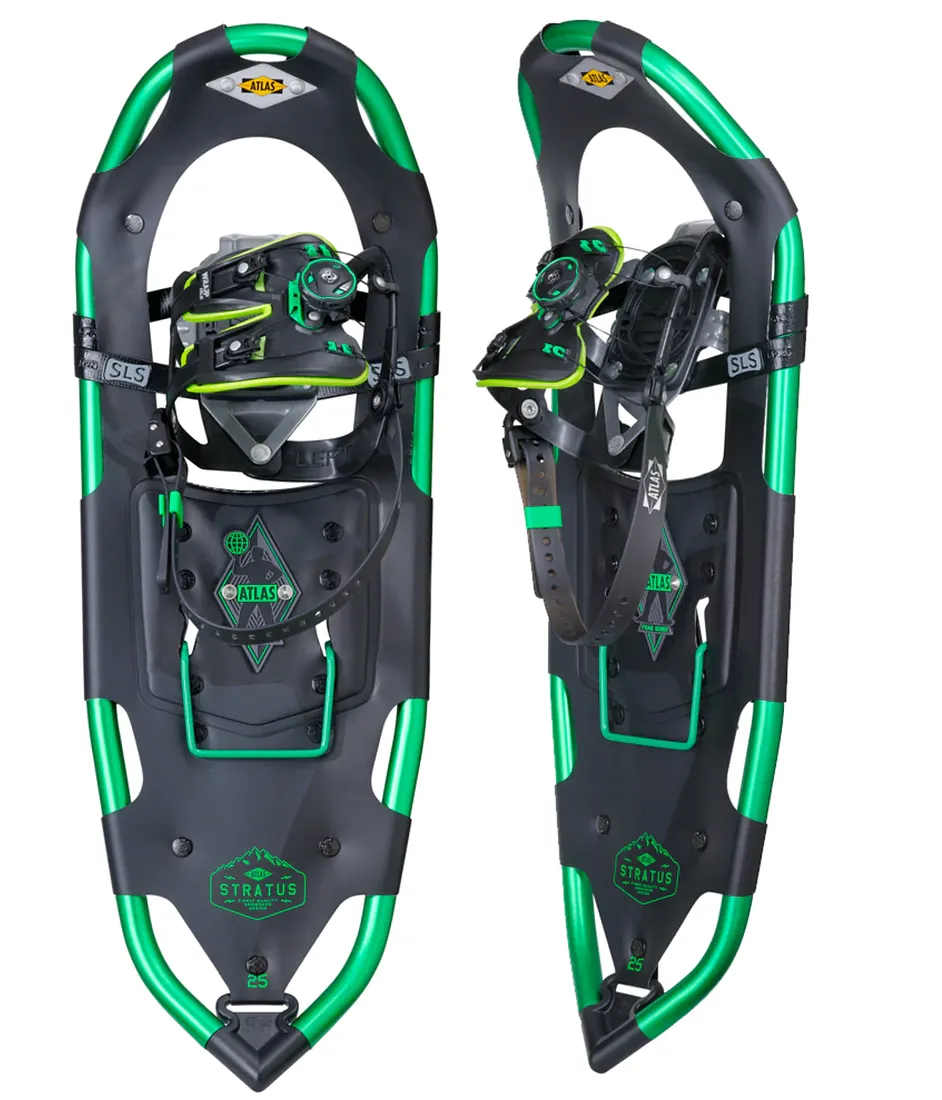
| Binding Design |
7
|
| Ease of Use |
8
|
| Flotation |
7
|
| Traction |
8
|
| Weight |
6
|
Reasons to Buy
- Affordable price point
- Robust traction
- Adaptable bindings
- Stellar durability
Reasons to Avoid
- Might not float well in soft snow
- Potential comfort issues on longer treks
The Atlas Atlas Stratus snowshoes are the go-to gear for budget-conscious adventurers who refuse to compromise on quality. Famed for their sturdy build and budget-friendly price tag, they promise reliable performance for snow-filled escapades.
These snowshoes have been touted by users as surprisingly comfortable and user-friendly. Their Wrapp Trail bindings have garnered much praise for offering a precise, snug fit without causing discomfort, even during extended use. The bindings adjust easily and stay put, providing a great deal of stability to users.
One standout feature of the Atlas Atlas Stratus is its light weight. Users have appreciated being able to easily traverse different terrains, from rugged trails to soft powder, without feeling weighed down. While these snowshoes aren't designed for heavy-duty mountaineering, they excel on flat terrain and rolling hills, making them ideal for casual explorations and weekend snowshoeing excursions.
The elliptical frame design not only contributes to the light weight but also assists with effective load distribution when trekking. Users have commended this feature for its contribution to easier, smoother movement, especially when carrying backpacks or additional gear.
As for grip and traction, the Stratus is equipped with steel crampons that dig into the snow, keeping slips and slides at bay. The addition of a heel lift bar has made steep inclines less strenuous for users, giving this budget pick a competitive edge even when compared with some pricier counterparts.
However, not everything about the Atlas Atlas Stratus has been met with applause. Some users have voiced concerns over the durability of the bindings, citing minor damages after only a few uses. Moreover, there have been comments about a lack of suitability for extremely frozen or icy conditions when maximum traction is mandatory. That being said, for lighter snow and general usages, this product still wins the heart of many.
The Atlas Atlas Stratus stands out in the budget snowshoe market for their comfort, usability, and lightweight design. Nevertheless, potential buyers should consider their specific needs and environments before making a decision.
No prices found. Check back later!
Tubbs Mountaineer
$279.95Best Snowshoes for Backcountry Snowshoeing
Based on our research and testing, we think the Tubbs Mountaineer are a solid choice if you want snowshoes that's really well suited to Backcountry Snowshoeing.
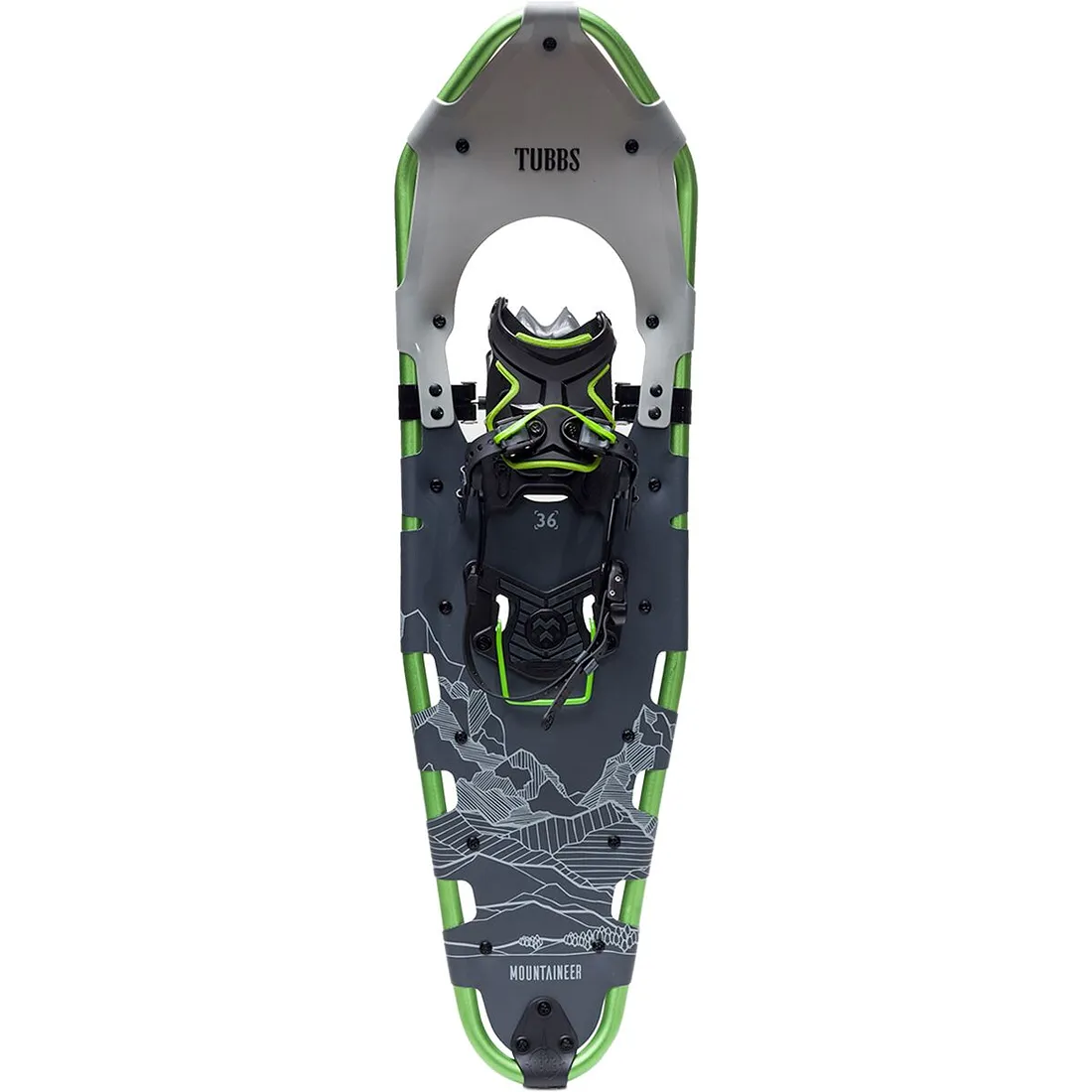
| Binding Design |
9
|
| Ease of Use |
8
|
| Flotation |
6
|
| Traction |
7
|
| Weight |
7
|
Reasons to Buy
- Excellent overall traction
- Adjustable, comfortable bindings
- Remarkably durable material
- Great maneuverability in various terrains
Reasons to Avoid
- Slightly heavy compared to other models
- Might feel bulky for fast-paced hiking
- Uncomfortable for narrow footed wearers
If you're someone who loves to wander off the beaten path, you're going to need a reliable pair of snowshoes to get you through those untouched snowy trails. Enter the Tubbs Mountaineer. It's a premium gear designed specifically for backcountry expeditions and this baby doesn't skimp on performance or durability.
First, let's talk about the traction. Tubbs went above and beyond with the Mountaineer. The ActiveFit+ binding and the Anaconda Crampon under the ball of the foot provide aggressive and secure grip on all sorts of terrain. Buyers have mentioned feeling solid and stable even when trekking over uneven or icy ground.
One key factor that makes it a favorite among snowshoers is its ease of use. Reviews have highlighted the convenience of its binding system. The gloves-on operation is really appreciated among shoppers. A quick pull-on, let’s you slip in and out with minimum hassle, which is a real boon when you're out in the cold.
Buyers have consistently expressed their satisfaction with the Tubbs Mountaineer's durability. The frame and decking are built to withstand tough backcountry conditions. They reported trek after trek without a glitch, praising its robustness and longevity.
Moving on to the Fit-Step frame and SoftTec decking, users noted that aside from improving traction, these features helped to reduce muscular skeletal impact, leading to a more comfortable trek. Hence, long trips are more manageable and less tiring.
However, let's not ignore some of the less enthusiastic feedback. There were a few users who found the Mountaineer a bit on the heavy side. Compared to other models in the market, it's not the lightest option. Some mentioned they could feel the extra weight, particularly on longer treks, which potentially could lead to quicker fatigue.
Other minor grievances included a slightly more difficult time traversing over very deep or fluffy snow. While these experiences were not a deal breaker for most, it's something to keep in mind if you prefer trekking in these conditions regularly.
In general, the Tubbs Mountaineer comes up as a top pick among backcountry adventurers time and time again. Its rugged durability, impressive traction, and gloves-on operability are frequently touted by users. As per customers, these are reliable snowshoes that promise performance and longevity, making it a worthy investment for severe backcountry snowshoeing.
Prices
Related Posts

Your mountaineering boots are your best friends when you're halfway up a snowy mountain. They're the one thing standing between your toes and the frigid temperatures, so you really, really want to...
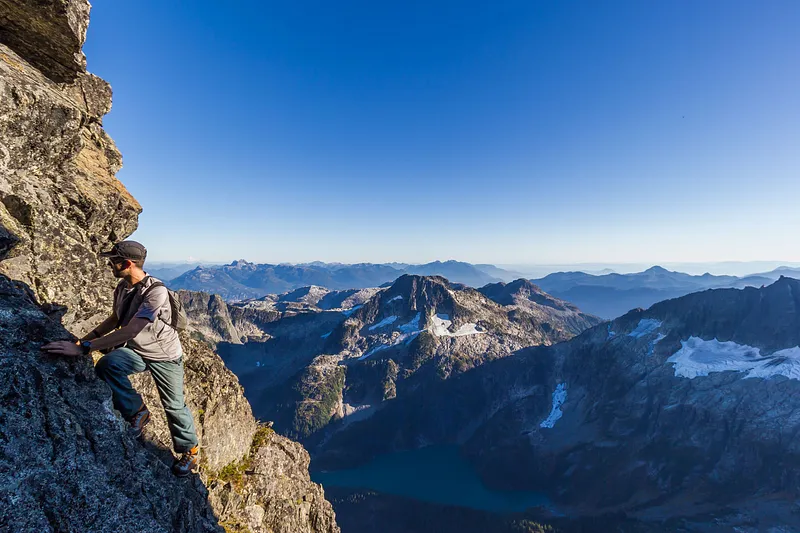
A really solid pair of mountaineering boots can be the most important piece of gear that you have when you're halfway up a snowy mountain. Deciding what boots to buy is critical, so it's important...
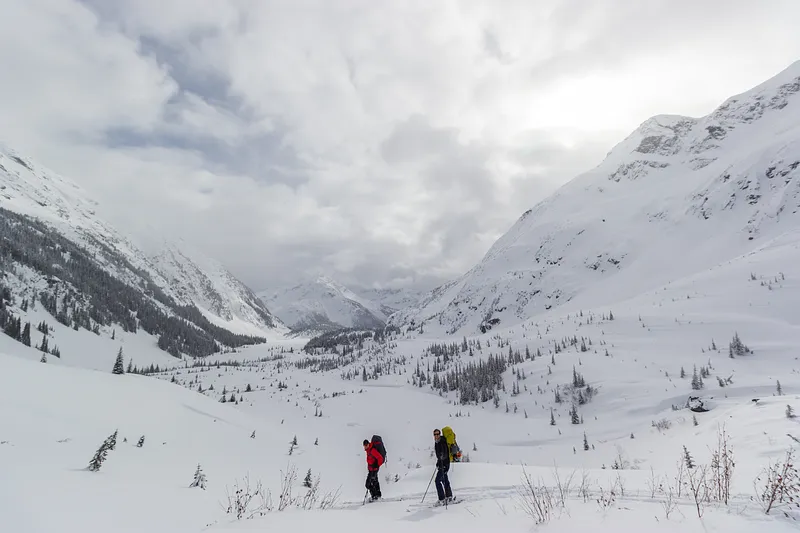
Everyone should own at least one winter jacket. Whether your journey is going to the grocery store or to the top of a mountain, it gets cold out there, and a good winter jacket will see you...
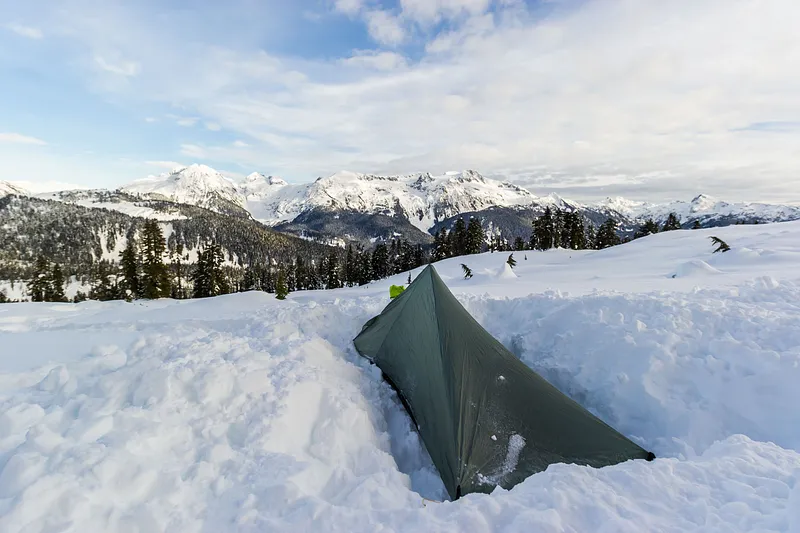
When the mercury dips and you are out in the wilderness, the one gear you don't want to skimp on is a good sleeping bag. Our top pick for the Best Winter Sleeping Bags is the Feathered Friends...
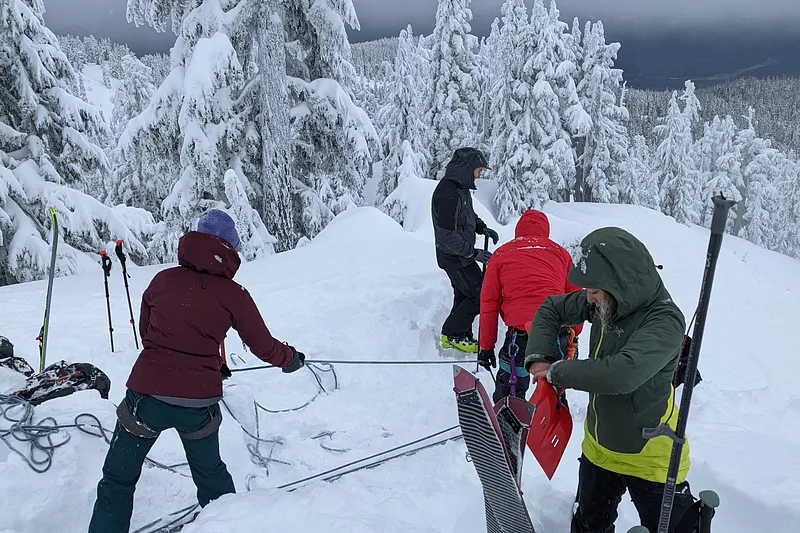
One great winter jacket is something everyone should own. When the temperatures plunge, there's a certain amount of satisfaction that comes from pulling a big, puffy winter jacket out of the...
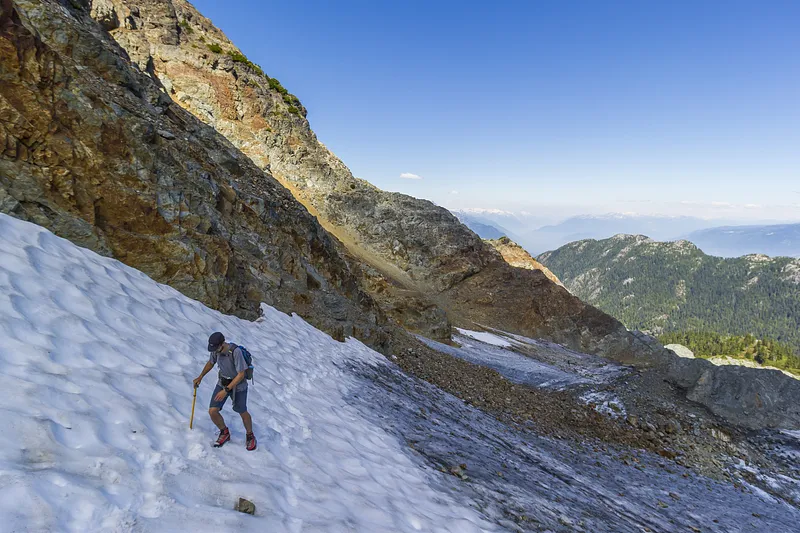
Hey there adventurers! If you're thinking of conquering icy terrains or want to get that mountaineering badge, you've landed on the right page. We take our ice axes seriously here, after all, it's...
